Telecommunications Companies to Boost Signal Strength in Quake-Hit Areas
ZAGREB, 20 January 2021 - An agreement has been reached with telecommunications companies to boost signal strength in the quake-hit areas of Sisak-Moslavina County so that students there could normally follow online classes.
This was stated by Bernard Gašić, State Secretary at the Central State Office for Digital Society, who in an interview with Croatian Radio called on citizens who have problems with signal strength to contact the task force dealing with the aftermath of the 29 December earthquake so it could help them solve the problem in cooperation with telecommunications operators.
Gašić said that his office, in cooperation with the Faculty of Geodesy and the State Geodesy Office had launched a geoinformation system to help the task force follow all activities on the ground.
The system helps the task force follow information on activities on the ground, including data on all locations in the epicentre of the earthquake, addresses, streets, settlements, counties, or citizens' residence.
Also followed are data on structural engineers' estimates of buildings damaged in the quake as well as firefighters' and the police force's activities. The system is also expected to provide information on which citizens need to be delivered meals, Gršić said.
The application is currently intended only for the work of the task force but in the long run it will be used to help citizens collect information needed to apply for housing reconstruction, Gršić said.
PHOTOS Unforgettable View of Snow-Capped Alps from Japetic
January 20, 2021 – A white blanket of snow covered many Croatian destinations, including one of the most popular excursion sites – Japetic, the highest peak of Samobor Hills. At this time of year, Japetic offers a beautiful view of the Alps, and photographer Josip Škof captured these unforgettable snow scenes last weekend.
At 879 meters above sea level, Japetić, the highest peak of Samobor Hills, is a favorite Croatian destination for picnickers and hikers. Due to its preserved natural beauties, Japetić has been declared a reserve of forest vegetation.

On one of the trails, not far from the top, a lookout tower was built in 1889, when the Eiffel Tower was also built. The iron pyramid-lookout is 12 meters high and is under the protection of the Ministry of Culture. Until 1960, it was at the top of Medvednica mountain, but it was moved after the construction of the television tower on Sljeme.
A little above the lookout at the top of a steep meadow is the famous mountain lodge Žitnica, from whose terrace you will also find a beautiful open view of the surrounding Pokuplje hills area in the distance.

Popular Japetić lookout offers a view of the nearby peaks of Sljeme, Oštrc, Okić, Klek, Plešivica, Sv Gera, and even Bjelolasica, Risnjak. In clear weather like these days, especially in winter, even the Alps can be seen.
Last snowy weekend, while some people visited destinations such as Plitvice Lakes and ski resorts in Gorski Kotar and Lika, photographer Josip Škof stayed in Zagreb County, capturing the snow-capped Alps from the winter-bound Japetić.
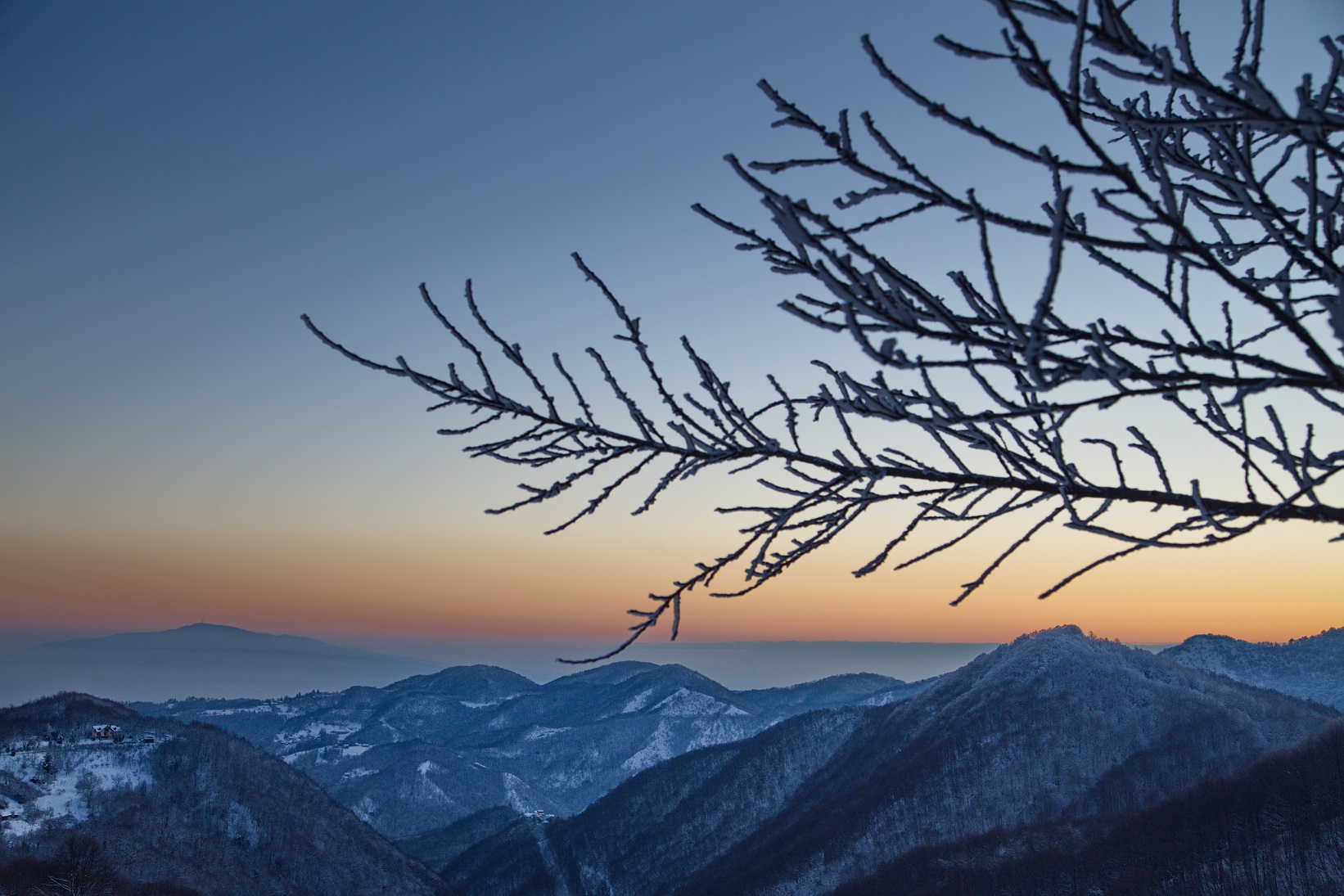
And he was not the only one because Japetić is one of the most exciting lookouts in Zagreb's vicinity, only half an hour drive away. It is an unavoidable destination for visitors during the winter because of the snow that covers the old beech forest, creating a winter idyll, but also because of the unforgettable view of nearby peaks.

"I can't find the words to describe the scenes that were created in front of me. Luckily, I brought my camera, so I can most faithfully show you what views I enjoyed this weekend. I also chose the right day, and my view reached as far as Triglav peak, about 150 kilometers away. A little closer, approximately 120 kilometers, the Kamnik Alps were in the palm of my hand," said Škof in his Facebook post, telling us to enjoy the beautiful photos of his beloved native Zagreb County.
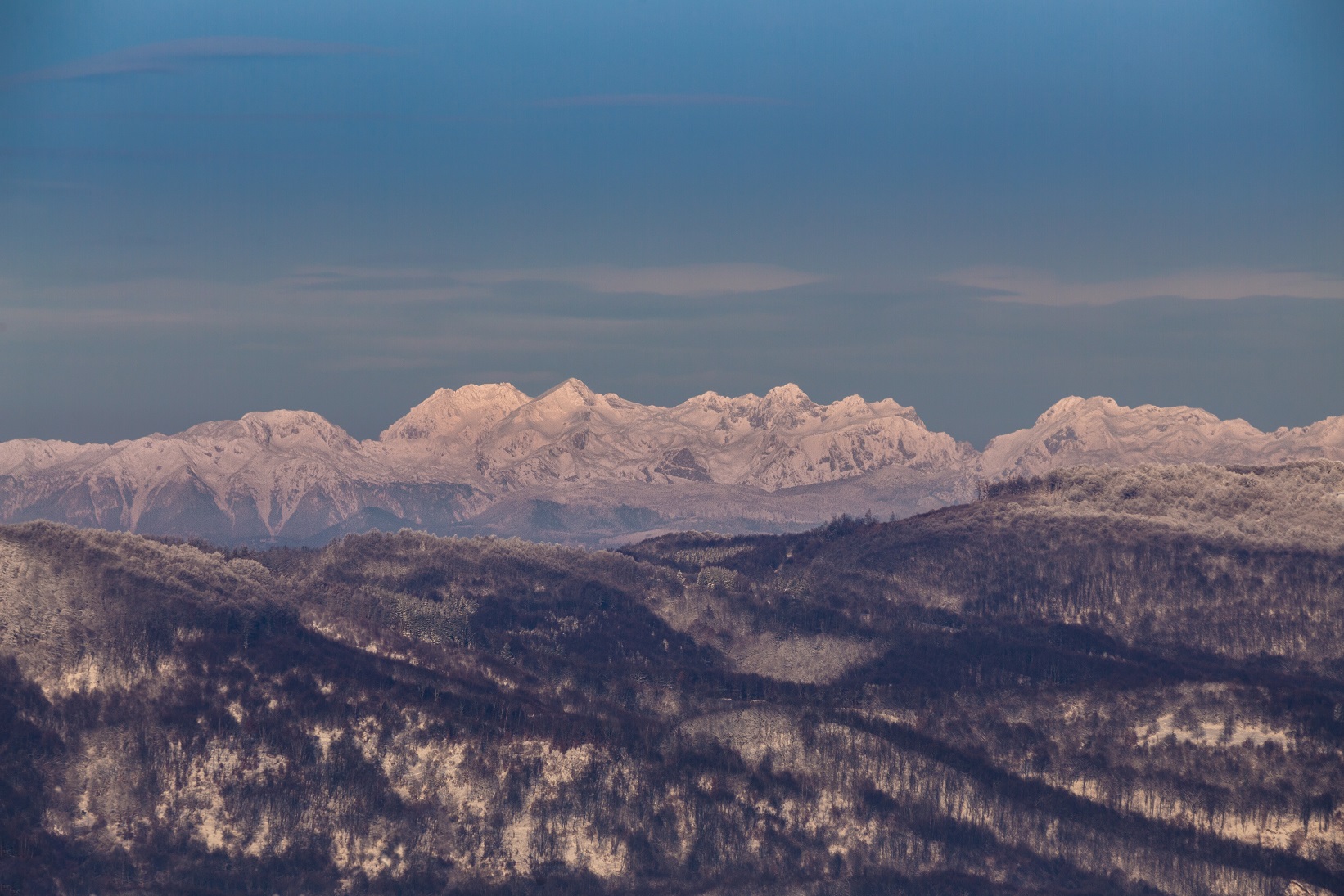
Although Alpine ski resorts are inaccessible to us this year due to the coronavirus pandemic, it is almost unbelievable that we still have the opportunity to see Alpine peaks from the Zagreb neighborhood. Marked hiking trails from Ivančići and a good road over Draga Svetojanska lead to Japetić.

The ascent to Japetić is not overly demanding, and the scenes of winter idyll are worth experiencing. Josip Škof's photo gallery is calling us to take the opportunity and go to one of Croatia's most interesting lookouts, only thirty minutes away from the Croatian capital of Zagreb.


All photos: Zagreb County Tourist Board / Josip Škof
For the latest travel info, bookmark our main travel info article, which is updated daily.
Read the Croatian Travel Update in your language - now available in 24 languages.
Dingač Wine at Joe Biden Inauguration an Opportunity for Croatia
January 20, 2021 - Dingač wine will be served at the Joe Biden Inauguration on Wednesday, which is a huge opportunity for the Pelješac wine region and the whole of Croatia.
The inauguration of the new US president Joe Biden on Wednesday will attract people from all over the world - and in addition to the list of distinguished guests, two Croatian wines will have their place in the spotlight.
Namely, T.portal writes that the first protected Croatian wine - Dingač - will be found on the tables of Biden's inauguration, as well as Zinfandel.
Plavac Mali is the most important native grape variety in Croatia, and the best Plavac is produced in the localities of Dingač and Postup on the Pelješac peninsula, on the south side of the island of Hvar, and in the good positions of the Brač and Vis vineyards.
"Dingač had a good reputation before the 15th century and was sold at higher prices than all other wines in the market. It is a premium dry red wine, protected by the Geneva Convention in 1961 and the first Croatian wine protected by law. More than 90 percent of Plavac is produced on Pelješac. The fact that it will be served at Biden's inauguration is a great promotion for the wine itself and the whole of Croatia," says Slobodan Rosić, secretary of the Plavac Mali association from Pelješac.
"I think this is an opportunity for the whole of Croatia, as it is great to have a bottle of wine from Croatia on the tables of the inauguration. The producer is not important either, but Pelješac, Dubrovnik-Neretva County, and Croatia. I think that we winemakers, as well as all our counties and chambers, should start a good wine campaign to place Dingač on the world map; that is a good way," says Rosić.
He adds that such an opportunity should definitely be used because of the coronavirus pandemic, which drastically slowed down sales:
"Because of the coronavirus pandemic, we can't even offer a day of open wines. We have large stocks of unsold wine in warehouses, and we expect restaurants and cafes to open every day. The wine will not be distilled, it will age for a year without income, but it is difficult for winemakers, as they have been without income for a year," he concluded.
Dragan Kovačević, vice-president of the Croatian Chamber of Commerce for Agriculture and Tourism, believes that the selection of Croatian wines for Biden's inauguration is the culmination of many years of trends in their successful export and promotion in the American market.
"Our exports are growing at a rate of 10 to 15 percent per year, and according to data for the first ten months of 2020, it reached 860 thousand dollars or remained at the levels of 2019 despite the business crisis and the COVID-19 pandemic, which hurt all business segments, especially the wine sector, as it is highly dependent on promotional and social events and tourism trends," explained Kovačević. He added that in the USA, which is the fifth most important market for the export of Croatian wines, mostly top bottled wines (over 80 percent of exports) are sent at a high average price compared to other countries Croatia exports.
For example, in the first 10 months of 2020, the average export price of Croatian wines in the United States was 6.84 euro per liter, while in 2019, it was 6.89 euro per liter. Due to the specific distribution method, wine exported from Croatia for $12 for a bottle reaches $35 to $40 on the shelf of an American wine shop, or from $60 to $80 in restaurants.
"Wine for a country like Croatia, which achieves almost a fifth of its GDP through tourism and the multiplier effects of tourism, and is visited annually by over 20 million tourists, is potentially an important export product. Along with gastronomy, wine plays an increasingly important role in the tourist offer and branding of Croatia as an eno-gastro destination," said Kovačević, adding that we must emphasize our advantages, which are over 120 indigenous grape varieties and a mosaic of four wine-growing and wine regions with all varietal and positional specifics, which should be the backbone of marketing.
To read more about lifestyle in Croatia, follow TCN's dedicated page.
Germany Donates 40 Container Homes to Quake-Hit Areas
ZAGREB, 19 January 2021 - German Ambassador Robert Klinke on Tuesday presented his country's donation of 40 housing containers to quake victims in Sisak-Moslavina County, at a ceremony in the town of Lekenik.
Addressing the donation-giving ceremony, the ambassador said that the 29 December earthquake-triggered off a wave of compassion and solidarity throughout Germany.
All in Germany followed those tragic developments during the quake and in the aftermath in which several people lost their lives and many residents were left homeless, Klinke was quoted as saying in a press release issued by the Croatian Interior Ministry.
So far Germany has sent ten housing containers and the remaining 30 will arrive by the end of this week.
The diplomat recalled that Germany is providing relief aid from several levels: at the level of the federal government, through its states and also through the EU Civil Protection Mechanism. For instance, the states of Baden-Württemberg and Bavaria have provided the quake-affected areas with assistance from their fire-fighting societies.
The Croatian ministry's state secretary Trezija Gras conveyed the gratitude of Zagreb to the German authorities for the assistance in the aftermath of the quake.
She said that Germany had sent 500 tents through the EU Civil Protection Mechanism, and German firefighters had delivered 160 tonnes of aid immediately after the quake.
Canadian Ambassador Visits Petrinja and Glina
ZAGREB, 19 January 2021 - Canadian Ambassador Alan Bowman on Tuesday visited the quake-affected towns of Petrinja and Glina and held talks with officials of the Red Cross Croatia, which is in charge of distributing aid sent by Canada.
"Canada sympathises with all people affected by the earthquake. The Canadian government closely cooperates with the Red Cross in providing aid to those in need," said Bowman while addressing media in the Croatian language, after he held talks with the Red Cross Croatia director.
Bowman recalled that on the first day after the 29 December quake, Canadian Croats raised 100,000 Canadian dollars for quake victims and that the amount had in the meantime increased to nearly half a million dollars.
"The Canadian government has provided an equal amount which has been sent to Red Cross Croatia. I am here for that reason, to see the good job that is being done and to which Canada will contribute," the diplomat said.
The ambassador said that he was impressed with the Croatian government's handling of the crisis and the extent of operations conducted by the Red Cross.
"This is really impressive and I am sure that they give good assistance to those who need it," he said, adding that he would like to visit Sisak, too, to get a full insight into the aftermath of the devastating quake.
A Croatian foreign ministry state secretary, Zdenko Lucić, who accompanied the ambassador during his visit to Petrinja and Glina, thanked Canada for the abundant donation.
2021 Expected to be Busy Year for Austrian Tourists in Croatia
January 20, 2021 - It should be a busy year for Austrian tourists in Croatia, who have chosen the country as the most sought-after destination this year.
HRTurizam reports that well-known Austrian travel organizer Gruber Reisen conducted market research titled "Travel Barometer in 2021". The results of the research show that Croatia is the most sought-after destination for the Austrian market.
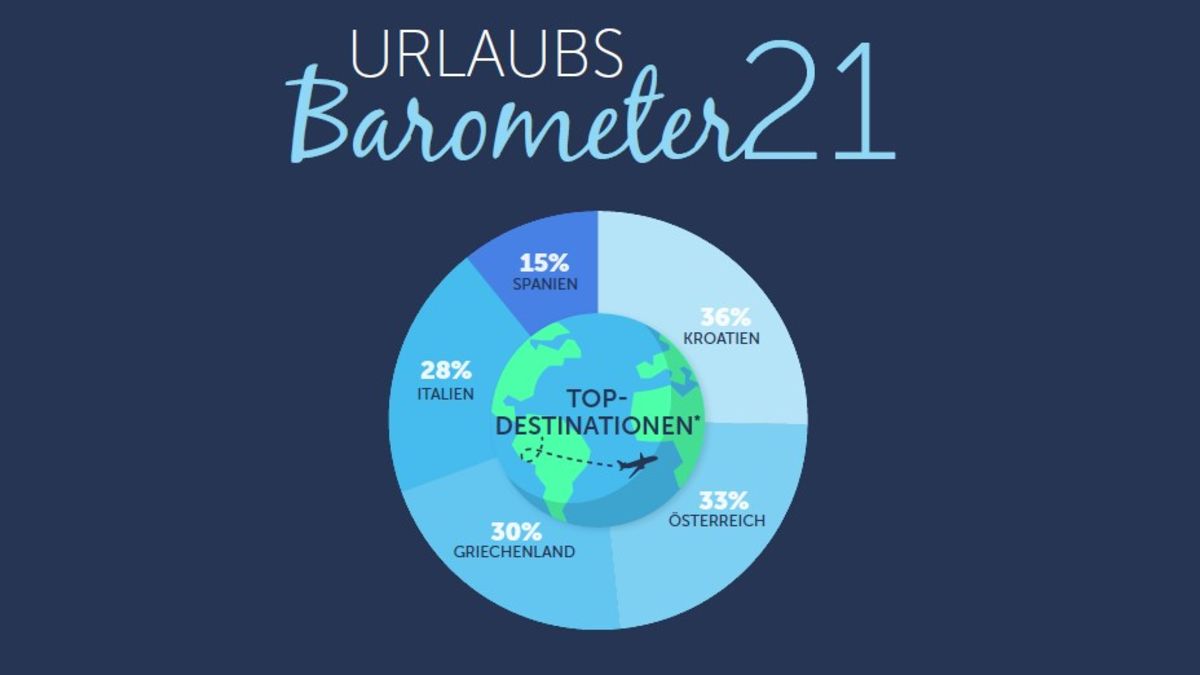
Copyright Gruber Reisen
According to the research results, after the leading Croatia, which achieved a share of 36 percent, the demand is followed by Austria with 33 percent, Greece with 30 percent, Italy with 28 percent, and Spain with a 15 percent share.
"When booking a trip, consumers pay special attention to safety in the destination, and the possibility to change their booking for free or other cancellation options at minimal cost is significant to them," commented Branimir Toncinic, director of the Croatian National Tourist Board in Austria.
The results also show that the demand for travel in this market is very pronounced as 23 percent of respondents have already booked a trip in 2021, while 73 percent of respondents will book their trips when the conditions for travel are created. Only 2 percent of respondents said they would stay home this year due to the coronavirus and their own sense of insecurity.
Of the activities during the trip, the most preferred is a beach holiday, which 58 percent of respondents mentioned, and the share of visits to cities, cruises, and wellness, which are becoming more and more interesting, is growing. When it comes to the number of trips during the year, 39 percent of respondents want to go on vacation twice a year. When it comes to the average duration of vacation travel, 47 percent of respondents chose trips lasting up to a week, while 45 percent expressed interest in two-week trips.
Half of the consumers or 54% of respondents seek expert advice from a travel agency, with 50% of them still listing travel catalogs. A third attaches great importance to friends and acquaintances' advice. In addition to travel brochures, social networks are also popular as a source of inspiration. A total of 53% of survey participants noted great importance to the possibility of using re-booking, i.e., cancellation through flexible booking conditions with little or no cost.
"These are excellent indicators in the significant Austrian market. This is a consequence, among other things, of continuous promotional activities that we carry out in the most important markets, which aim at positioning our country as a safe, diverse, quality, well-prepared, and close tourist destination," added the director of the Croatian Tourist Board Kristjan Stanicic.
The research was published by the popular online professional magazine Traveler Online and is available HERE.
For the latest travel info, bookmark our main travel info article, which is updated daily.
Read the Croatian Travel Update in your language - now available in 24 languages.
Brac Airport Optimistic about 2021 Tourist Season in Croatia
January 20, 2021 - Brac Airport is optimistic this year and will be satisfied with 70% of passengers compared to 2019's figures.
Brac Airport is preparing for the summer season in which the recovery of the tourism sector and air traffic is expected. Croatian Aviation asked Brac Airport Director Tonci Peovic about what the airport can expect this year.
Brac Airport has had two routes by Croatian national airline, Croatia Airlines, for years. It is the domestic line between Zagreb and Brac, which operates twice a week in the summer schedule, on Tuesdays and Saturdays. It will operate this summer season, too.
Also, on its long-term charter line Graz - Brac, Croatia Airlines plans to resume operations from mid-May to early October. This is the same program the airline has implemented in cooperation with tour operators in previous seasons.
The Czech company CSA also operated charter flights, which has not yet announced its flights for this year, but as this is a charter, it has enough time to do so. It is clear that charter flights primarily depend on the sale of package deals. Bookings will begin only with the arrival of spring and the eventual easing of restrictive measures.
On Saturdays and Sundays, German Sundair plans to introduce charter flights from Berlin and Dusseldorf from early May to late October, a plan the airline announced back in November last year.
Brac Airport will also welcome charter flights from Bern and Graz this summer, operated by Great Dane Airlines, in the postseason, from September to October. The company will operate an E195 aircraft to Brac, which has a capacity of 118 passengers with this carrier.
In the 2017 summer season, TUI introduced two charter lines to Brac, from Brussels and Deauville, while in the 2018 summer flight schedule, a third line was introduced; Rotterdam - Brac. The airport has not yet received information from TUI regarding operations for this summer, so it is not certain that TUI will operate to Brac this year.
In the summer of 2018, Luxair introduced the Luxembourg - Brac line, but it did not operate last year for objective reasons. Peovic confirmed that the airport is currently negotiating with this airline, and they hope that Luxair will decide on re-introducing this route as early as this summer.
Namely, in response to the pandemic and the devastating effect on air traffic, the airport reduced prices for several aircraft groups, sharing the risk of re-establishing traffic to Brac Airport.
Peovic also points out that there are announcements of a change in the hotel group's ownership structure on the island, which is expected to have positive effects on Brac Airport but only in 2022.
Considering the announced traffic for this summer season, Brac Airport will be satisfied with 70% of passengers compared to the figures from 2019.
For the latest travel info, bookmark our main travel info article, which is updated daily.
Read the Croatian Travel Update in your language - now available in 24 languages.
PHOTOS: Incredible Makarska Villa Kuk Immersed In Natural Rock
January 20, 2021 – One of Croatia's current most-adventurous architectural projects, the incredible Villa Kuk near Makarska, actually takes advantage of one of the area's most striking features – the natural rock of the Dinaric Alps foothills almost completely encases its hidden luxury
A villa or apartment on the Dalmatian coast is a dream for many. If not forever, then just for a little while. But, in the race to throw up new builds to satisfy demand, some older tricks can be lost. Some new buildings seem to seep heat in through the very walls, demanding the use of the air conditioner to keep you cool. In older buildings, that's rarely a problem. Built with thicker walls, from older stone, the time-honoured dwellings of Dalmatia are often cool enough without the klima.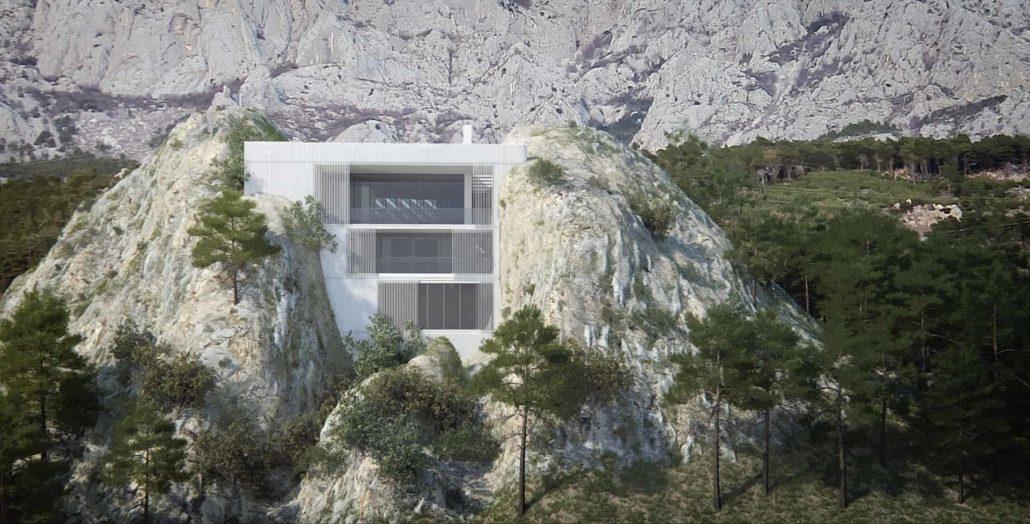

Perhaps this was a point taken into consideration by architect Branka Juras, whose latest project, Villa Kuk near Makarska, has walls broad enough to shelter from even the strongest sun. Her plans for Villa Kuk see the luxurious villa encased in the karst rock of the Dinaric Alps foothills. Sandwiched between two giant slices of rock, Villa Kuk's inner luxury will be all but hidden from view.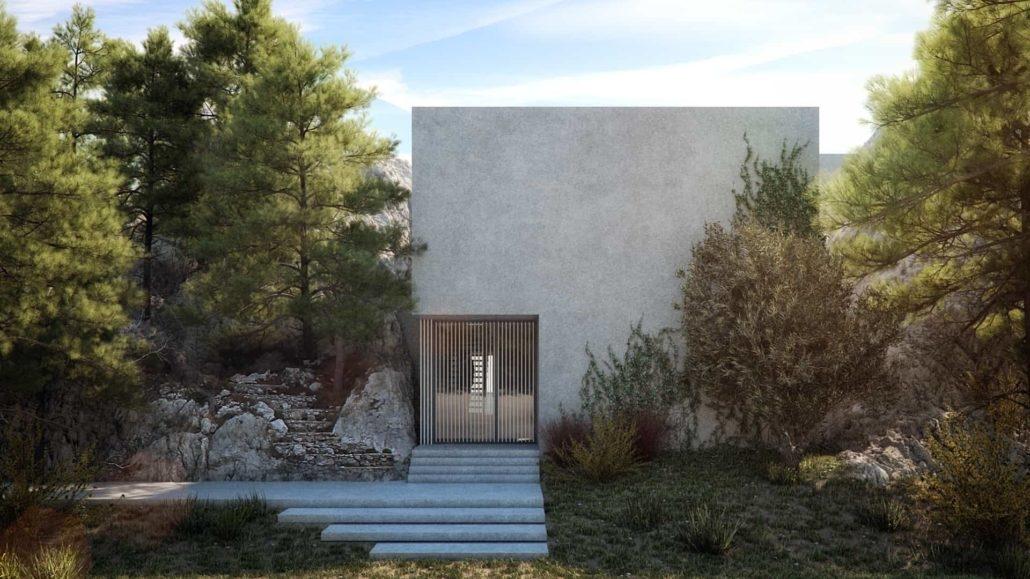

As detailed by journalist Anita Budimir in Jutarnji List's feature on the Villa Kuk project, Branka Juras of the Faculty of Architecture and a former employee of regarded Croatian architectural studio Randić & Turato architects. Her latest project, Villa Kuk, is being undertaken by Juras and the team she has assembled within her own practice.
Villa Kuk will be situated at 110 metres above sea level in the Velko Brdo area of Makarska, in the foothills of the Dinaric Alps immediately to the north of the city centre. Its west and east walls will be comprised of the huge, natural boulders between which the villa will sit. The villa will only be visible from the north and south, which will hold its constructed facades.

The south façade will use large glass walls, gifting a widescreen view of the open sea. A minimalist but luxurious contemporary design is planned for the interior. The project is actually a radical overhaul of a building that previously stood in the plot – a restaurant.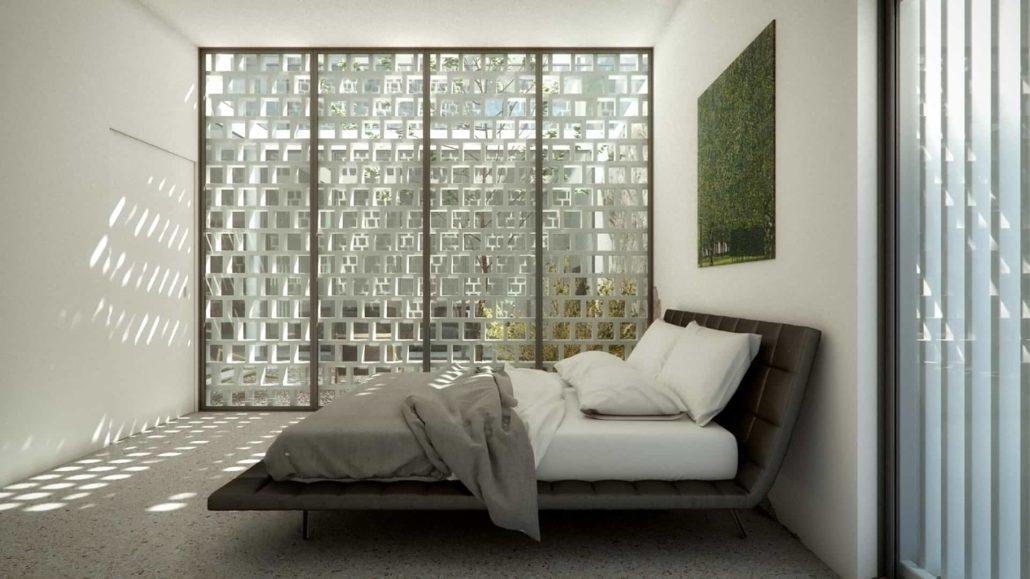

The villa will consist of a basement, ground floor and a roof area, which was used as a terrace by the restaurant. An atrium has been added to the dwelling's redesign, affording additional light and the basement space extended to accommodate extra living space. Though radical in design and ambition, the height of the building does not extend beyond the height of the rocks between which it is sandwiched, ensuring Villa Kuk will have minimal impact on the area's natural and existing aesthetics.
All 3d visualisation images of the completed Villa Kuk project by Marijan Katić
Heavy Rain Fills 11 Imotski Lakes To Almost Record Highs
January 20, 2021 – Famous for its Red and Blue lakes, there are in fact 11 Imotski lakes located around the Dalmatian hinterland city. Due to high rainfall, their rising water levels are nearing the highest point in living memory
Inaccessible without advance preparation and experience, visitors to the Red Lake in Imotski can only admire the spectacle from the upper edges. The lake is referred to as 'red' because of the red clay colour of the rock face which surrounds the water below. There's a challenge traditionally tasked to those brought here – see if you can throw a stone from the brim into the water. It's harder than it looks. The walls are steep and wide, the water a good long way below. Except for now. Like the water in all 11 Imotski lakes, the water level is currently at the highest point is has been for as long as anyone can remember. The height of the water in the Red lake alone exceeds 309 meters. Imotski's Red Lake © Tieum512
Imotski's Red Lake © Tieum512
Heavy rainfall over recent months is the cause for the high and rising water levels in the 11 Imotski Lakes. In December 2020, about 700 litres of rain per square metre was recorded in the area, practically filling all 11 Imotski lakes, as well as the river Vrljika.
High water levels are recorded in Galipovac Lake, Lokvičićko Lake (or Mamić Lake), Prološki lake and the Knezović lake. The water level in the Vrljica River is still high. Along with the picturesque Green Lake, named after the beautiful, icy turquoise green appearance of its water, the 11 Imotski lakes are an appealing topography for hikers, walkers and climbers to explore. Accurate data on the height of the water in Imotski's Blue and Red Lakes was recorded within the past few days.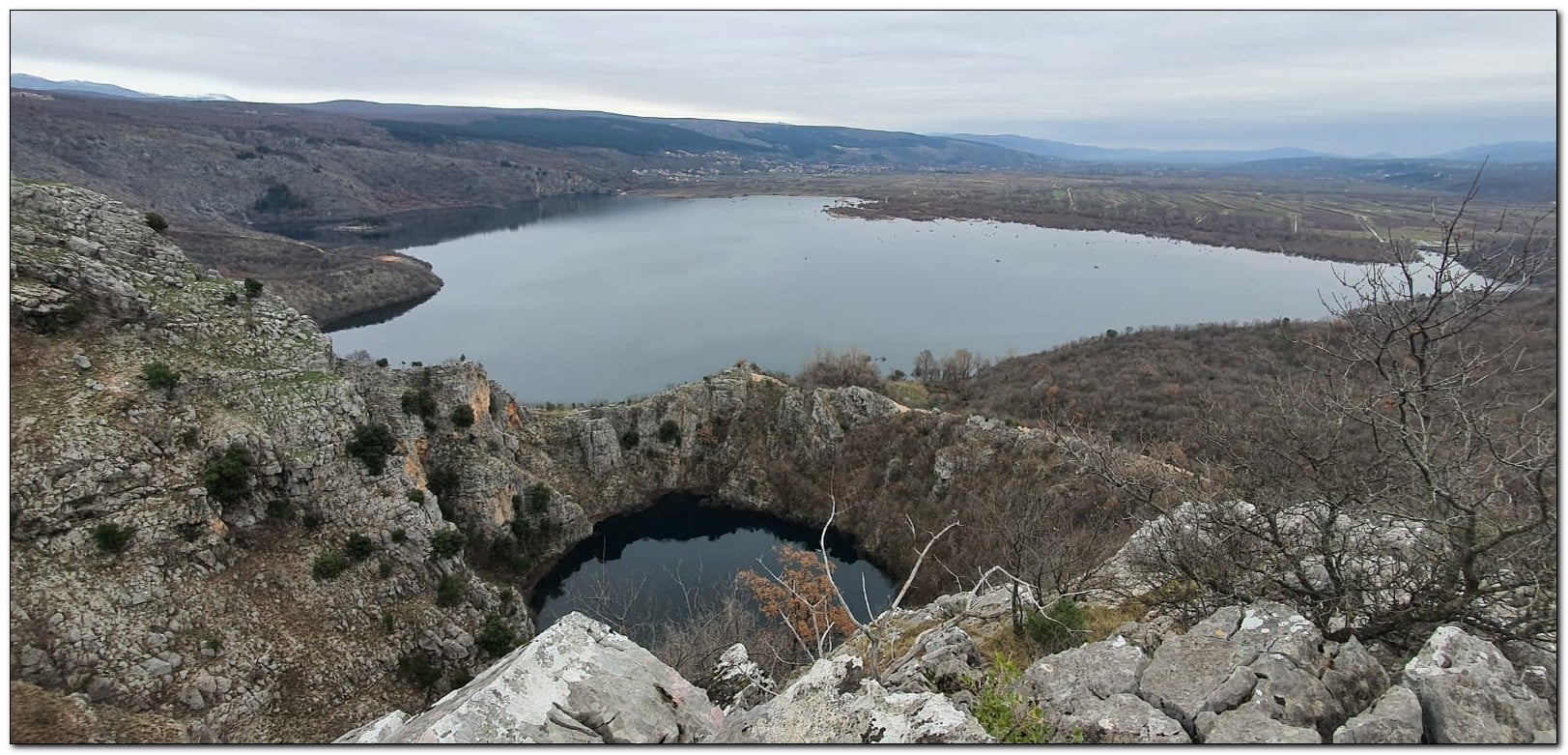 Photo of Lokvičićka jezera, one of the 11 Imotski lakes, taken by Josipa Rimac Vlajčić and a team from the Imotski Mountaineering Society during a mid-January expedition © HPD Imotski Facebook
Photo of Lokvičićka jezera, one of the 11 Imotski lakes, taken by Josipa Rimac Vlajčić and a team from the Imotski Mountaineering Society during a mid-January expedition © HPD Imotski Facebook
In the Blue lake – the one closest to Imotski centre and a popular summertime swimming and recreational site - the current water level is at 91.5 metres. It is still rising. Whether the water level will reach the record 102 metres recorded in 2012 will depend on rainfall within the region over coming days. Rains do not necessarily have to fall in Imotski to fill this or some of the other 11 Imotski lakes – they are fed by underground channels which flow from Bosnia.
Reporting on the rising water in Slobodna Dalmacija, local photographer and writer Braco Cosic informed that Imotski-based surveyor Ante Škeva had measured the current water level of Red Lake as a quite considerable 309 metres on Tuesday. If there was ever a time to take on the challenge of hitting its water surface with a stone, it is surely now.
Indigenous Croatian Species Congeria Kusceri Up For 'Mollusc of the Year'
January 20, 2021 – Let's be honest, Croatia has a lot more photogenic inhabitants than this. But, from over 120 molluscs registered, the indigenous Croatian species Congeria kusceri have been chosen as one of the top five finalists in this year's Mollusc of the Year competition.
There's actually quite a good reason why Congeria kusceri isn't so photogenic – it lives underground. In fact, Congeria kusceri comes from the Congeria genus, which are the only known freshwater underground shellfish in the world. Most of this genus has sadly become extinct. However, three members of the family survive in this region - Congeria jalzici which can be found in Slovenia, northern Velebit and northwestern Lika, Congeria mualomerovici which lives in the Sana basin in Bosnia, and Congeria kusceri which is endemic to underground cave systems of the Neretva and Trebišnjica basins in Herzegovina and southern Dalmatia. Although, that wasn't always the case.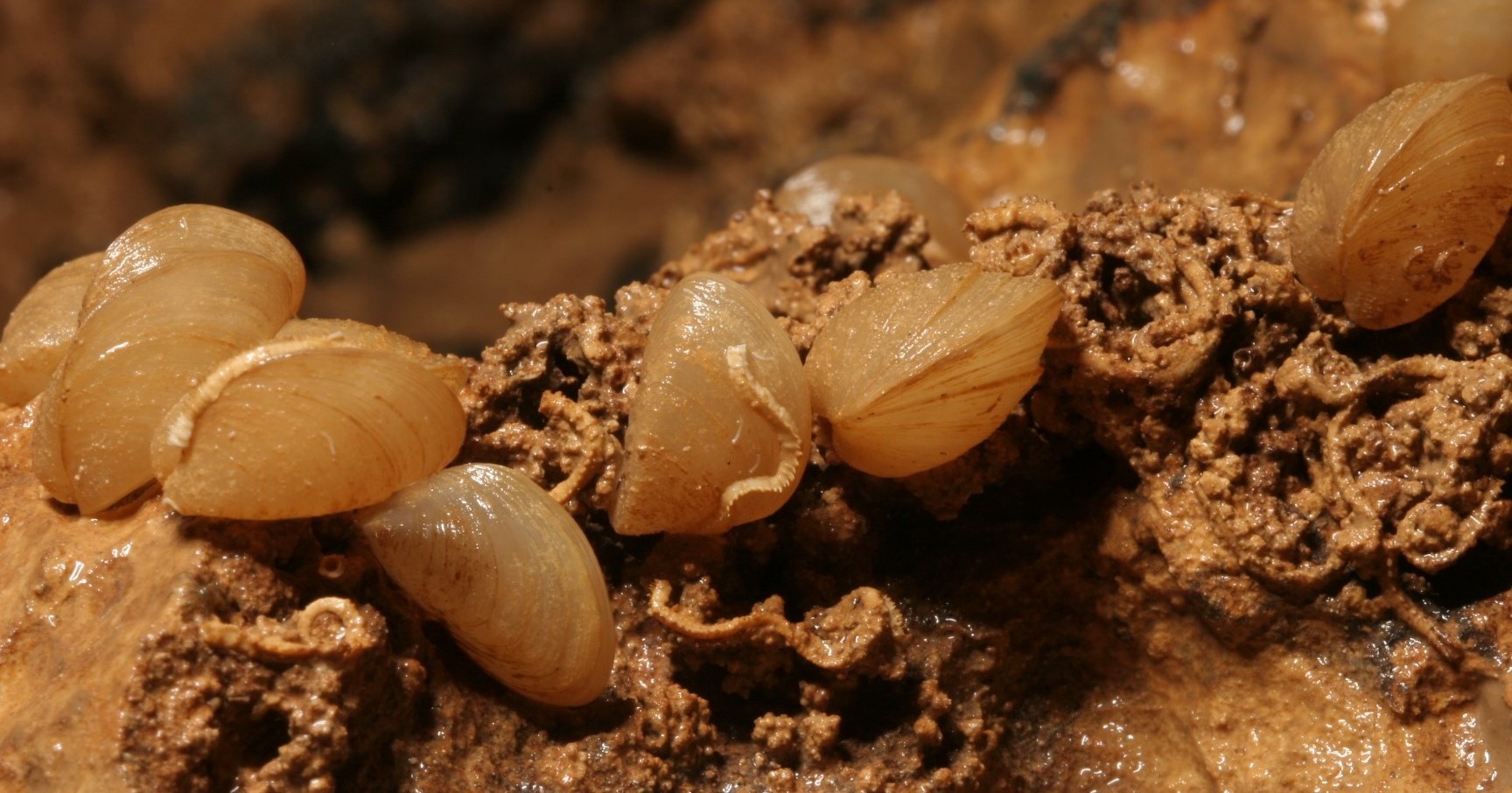 Congeria kusceri are albino molluscs, having lost their pigmentation while living away from sunlight. They live in southern Dalmatia, whose strongly supported football club, Hajduk Split, are also associated with the colour white © The Croatian Biospeleological Society (CBSS)
Congeria kusceri are albino molluscs, having lost their pigmentation while living away from sunlight. They live in southern Dalmatia, whose strongly supported football club, Hajduk Split, are also associated with the colour white © The Croatian Biospeleological Society (CBSS)
The ancestors of these molluscs used to live on the surface of lakes. Some of the molluscs followed the flow of water downstream and ended up inhabiting cave systems underground. Those which were able to adapt to a life of complete darkness survived. Having existed for so long in such a sunless environment, Congeria kusceri have lost their pigmentation - another reason we might consider them unphotogenic.
Congeria kusceri is on the Croatian Red List of Cave Fauna, in the category of critically endangered species, and at the European level, it is protected by the Directive on the Protection of Natural Habitats and Wild Fauna and Flora of the European Union. It is extremely rare. To date, these molluscs have been found in only fifteen underground locations of the Dinaric karst region.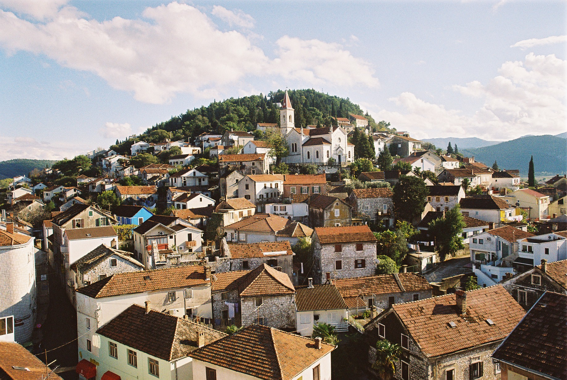 The Predolac hill in Metković © Jure Grm
The Predolac hill in Metković © Jure Grm
The largest living colony of Congeria kusceri that we so far know about can be found at the foot of the Predolac hill in Metković. Congeria kusceri is around two centimetres in length. Once part of a flourishing mollusc family, most of the Congeria genus died out around five million years ago. The genus was considered to be entirely extinct until shells of recently deceased individuals were found near Vrgorac in 1934. Congeria kusceri's new cousins - Congeria jalzici and Congeria mualomerovici – were only described and recognised as distinct sub-species as recently as 2013.
The Mollusc of the Year competition is run by the Senckenberg Research Institute and Museum, and the Centre for Translational and Genomic Biodiversity (TBG) in Frankfurt. Congeria Kusceri's success in being chosen as one of the finalists was announced by the Ruđer Bošković Institute in Zagreb.
Voting for Mollusc of the Year is open to the public. Anyone who is not too shellfish with their time and who may wish to support this endangered Croatian underdog in the competition can vote here


